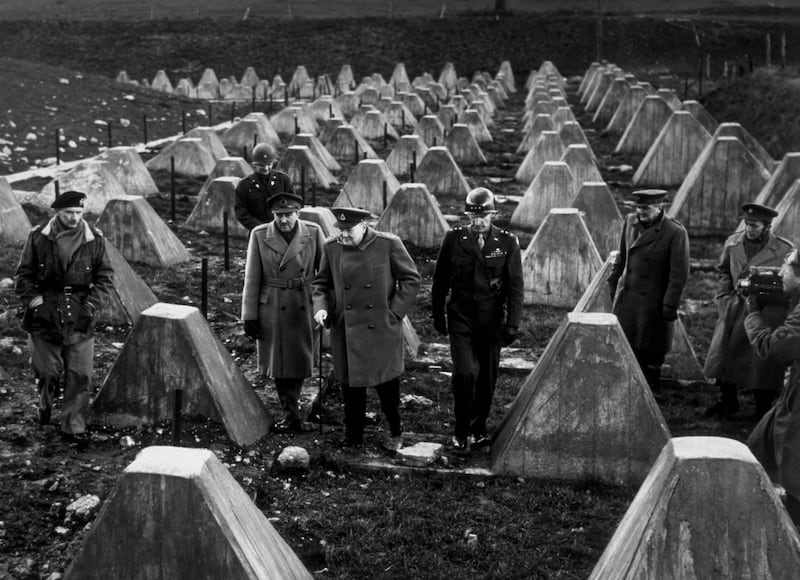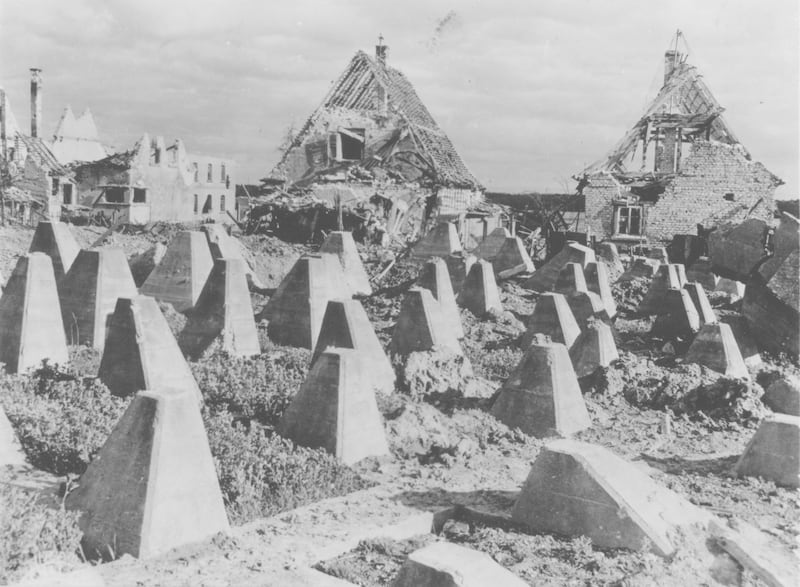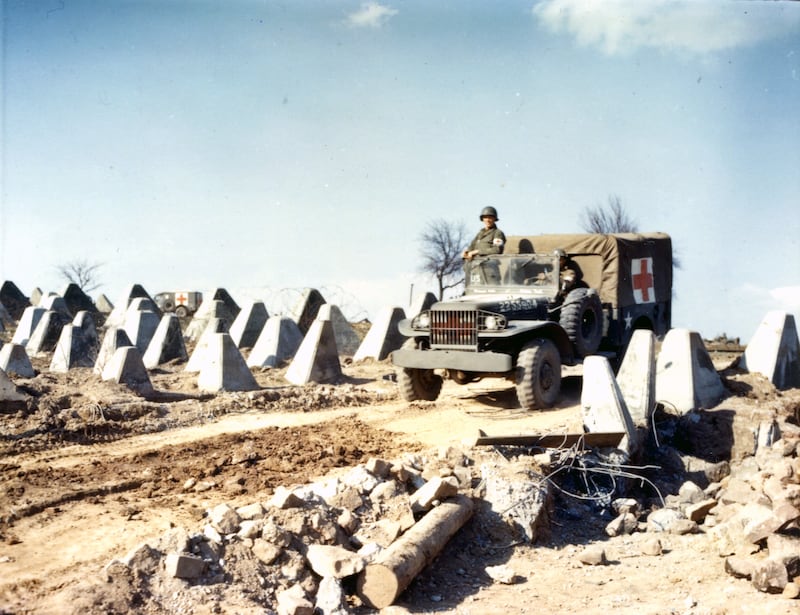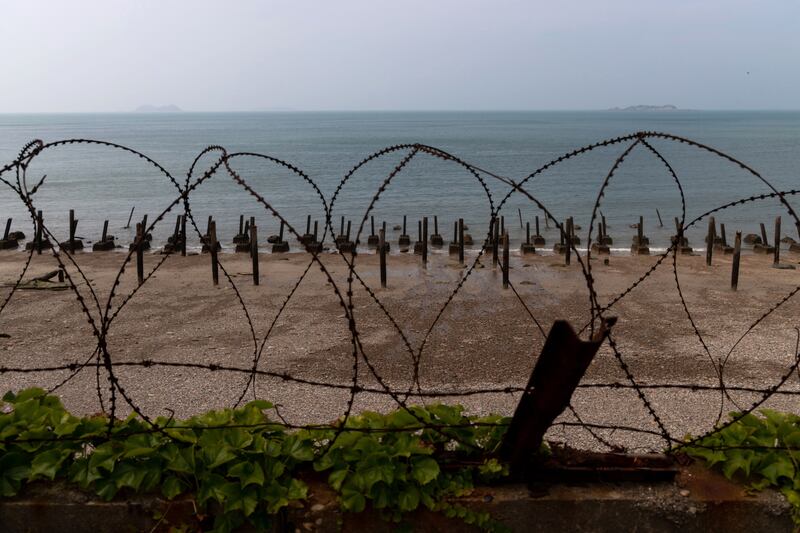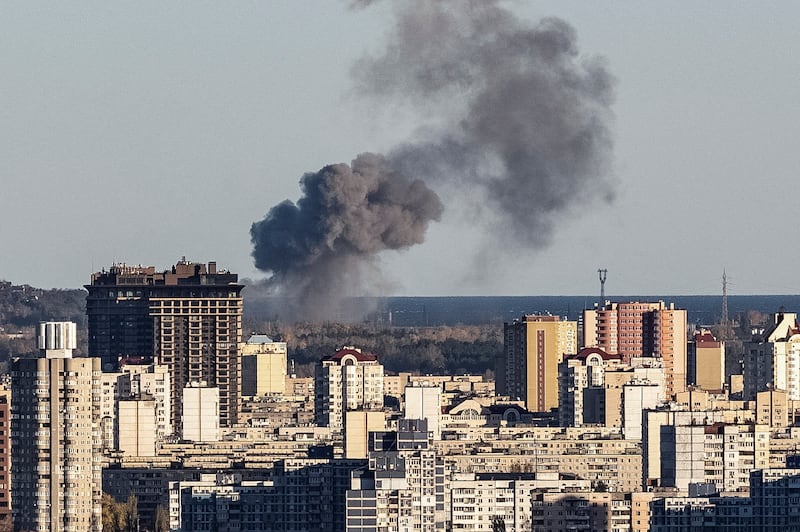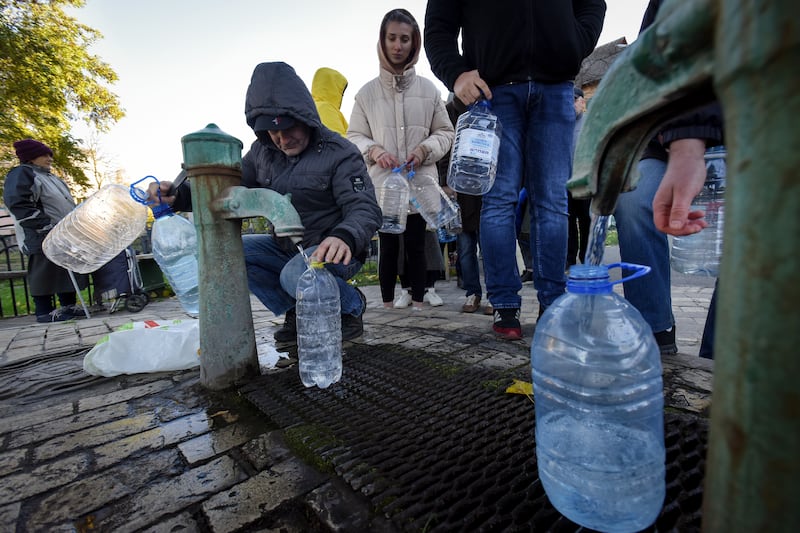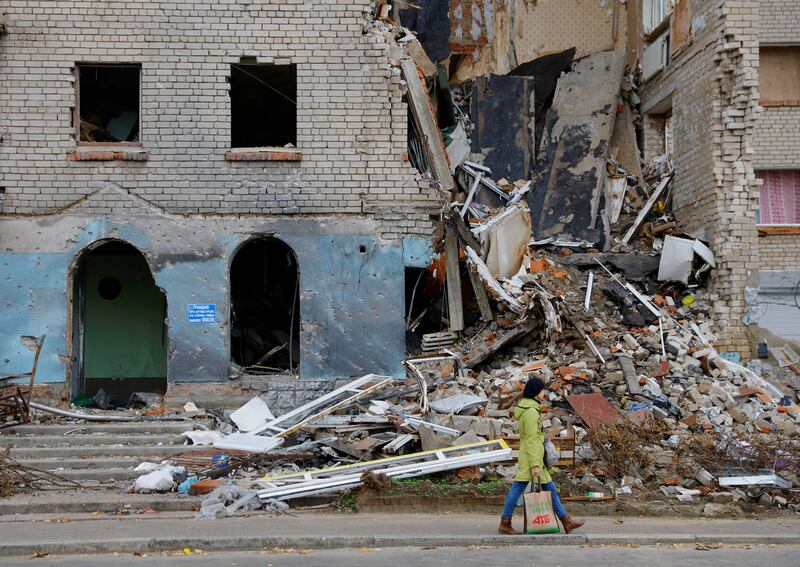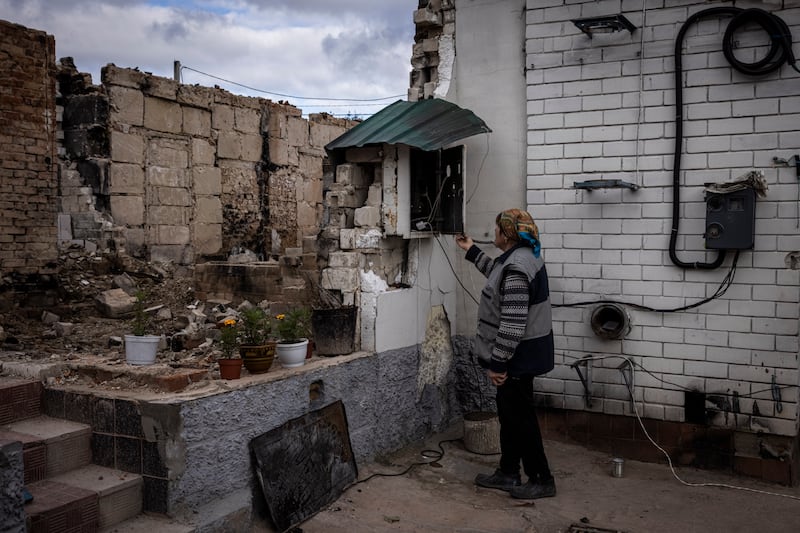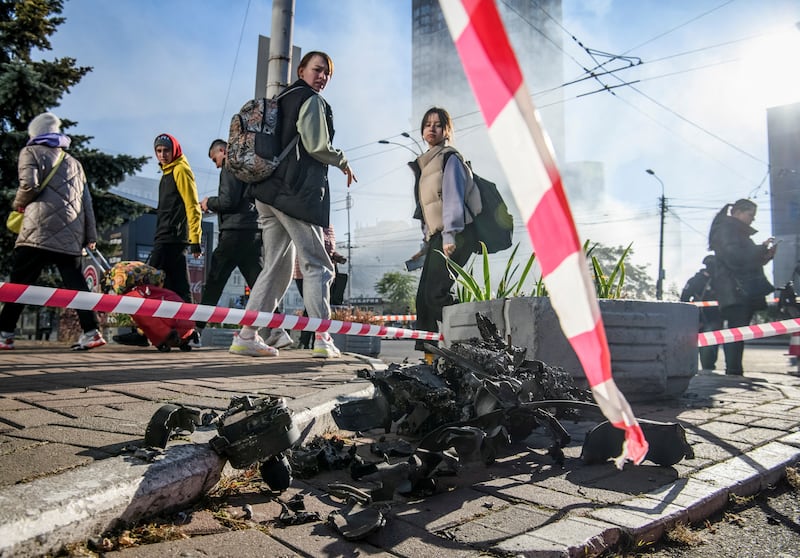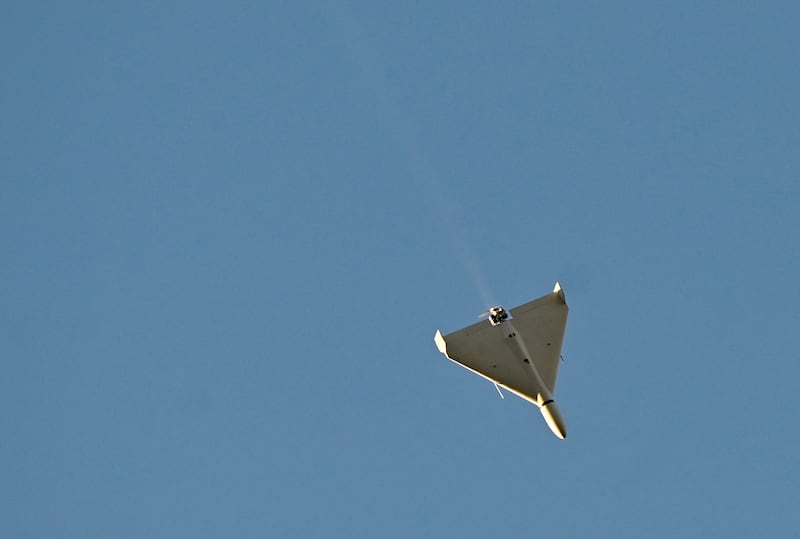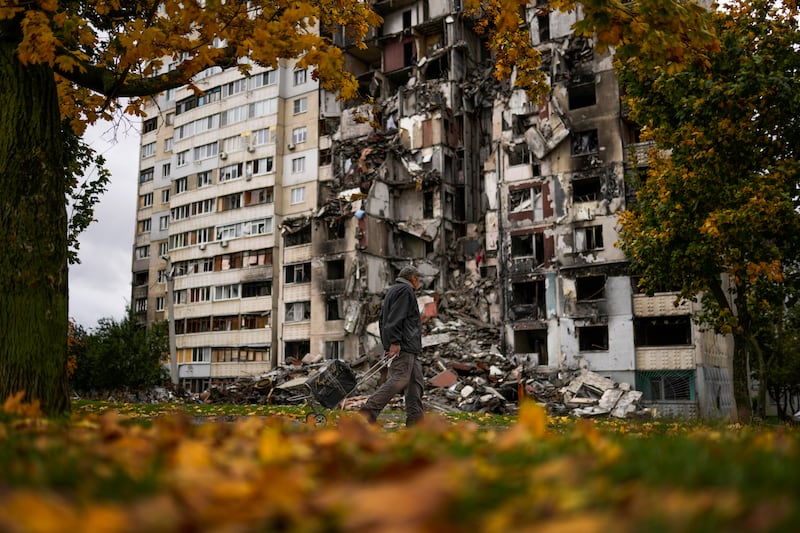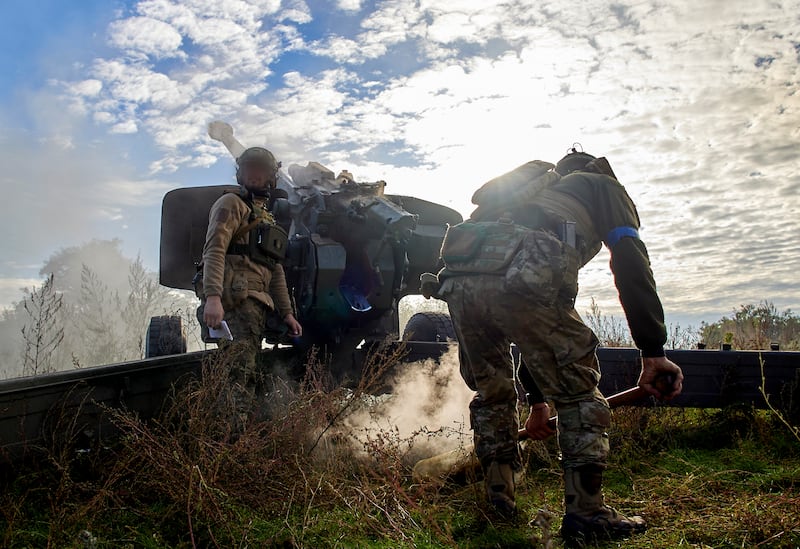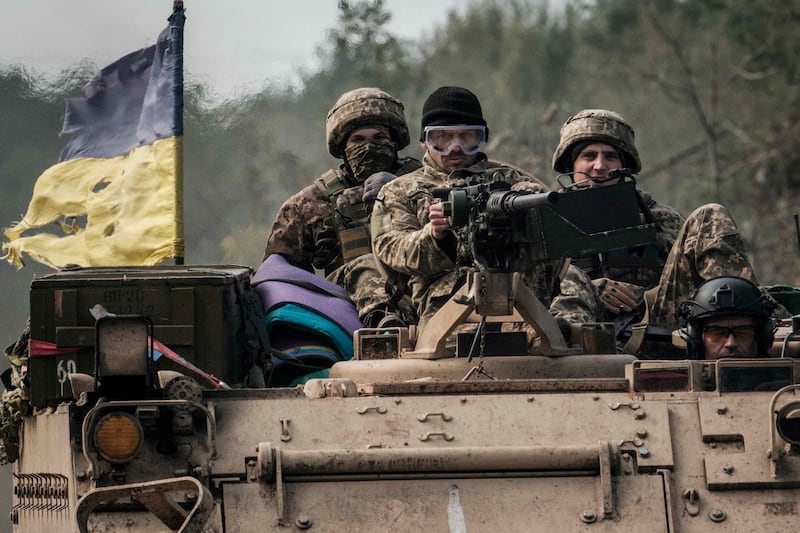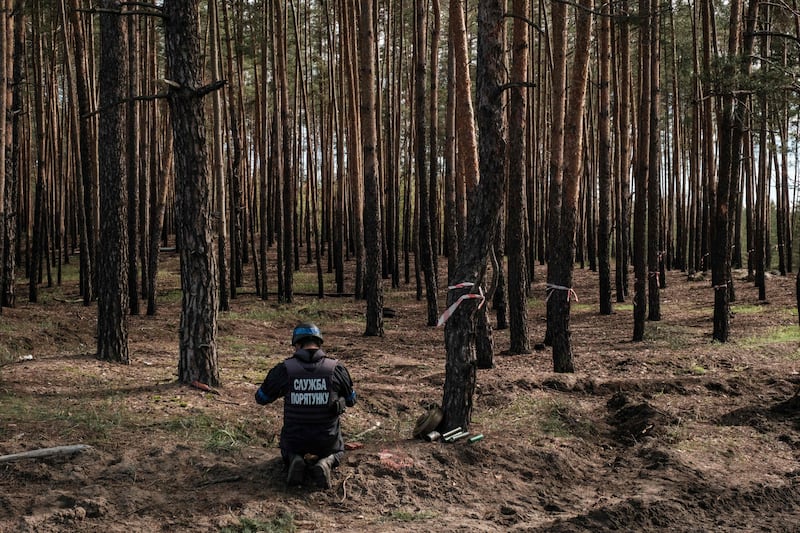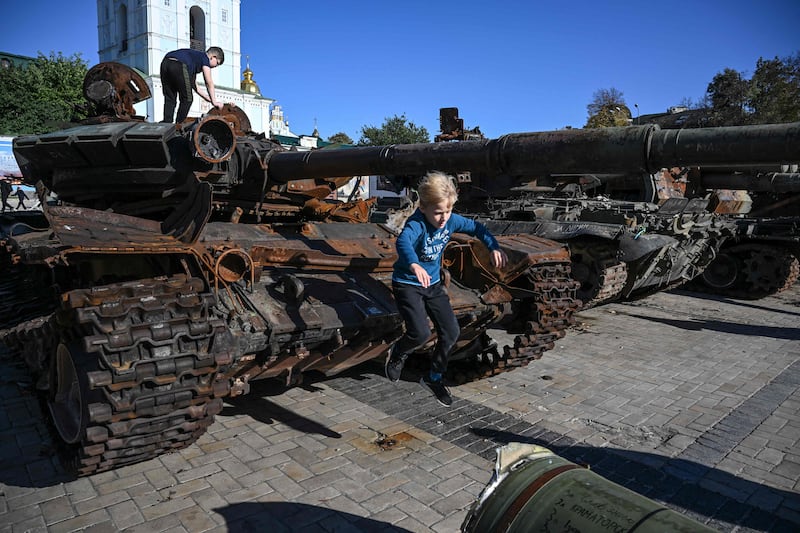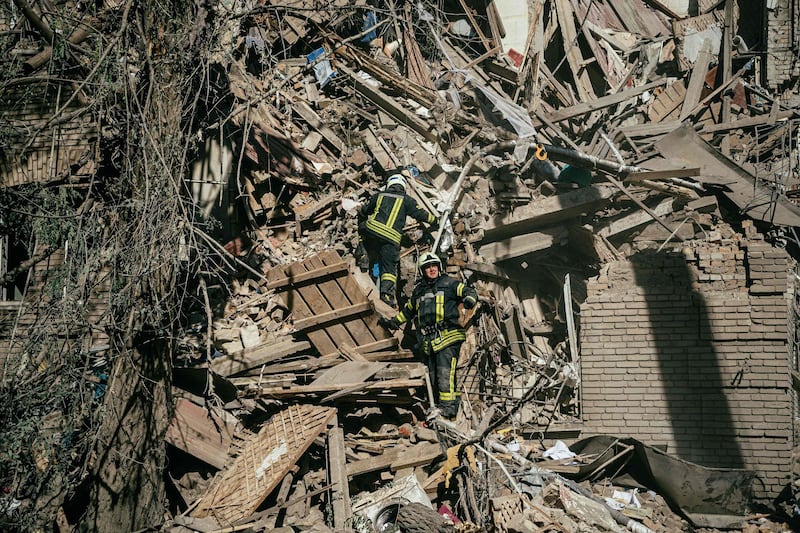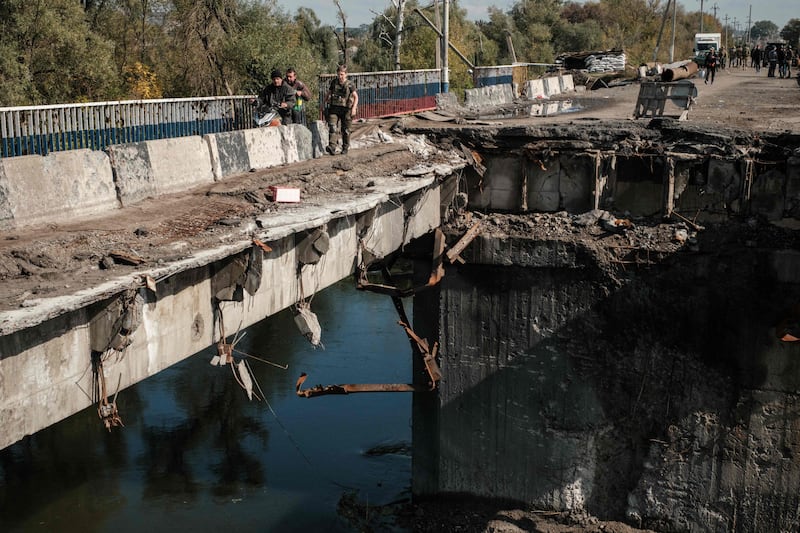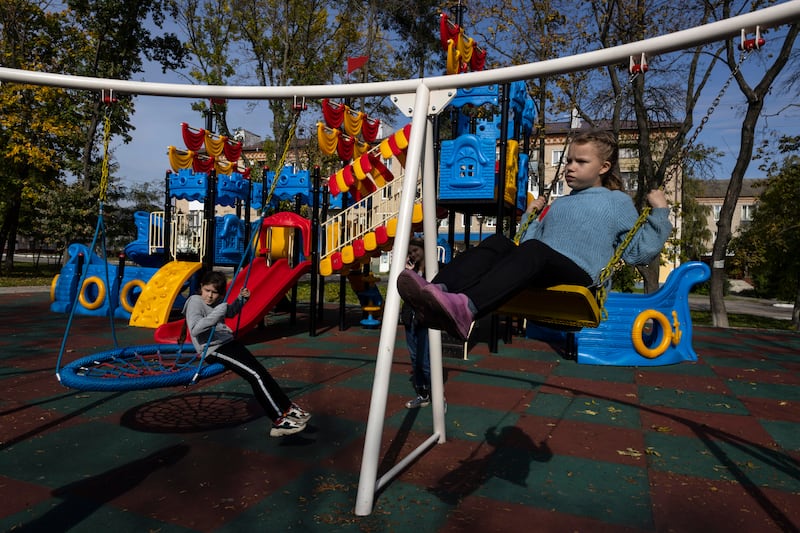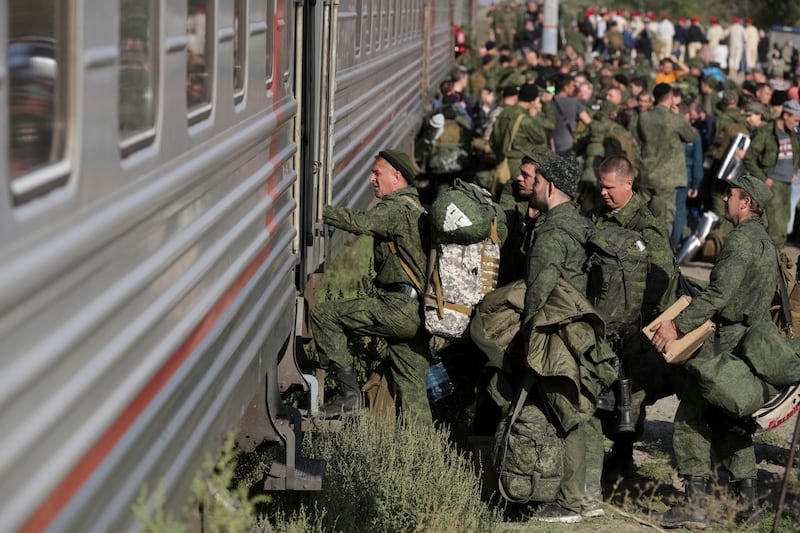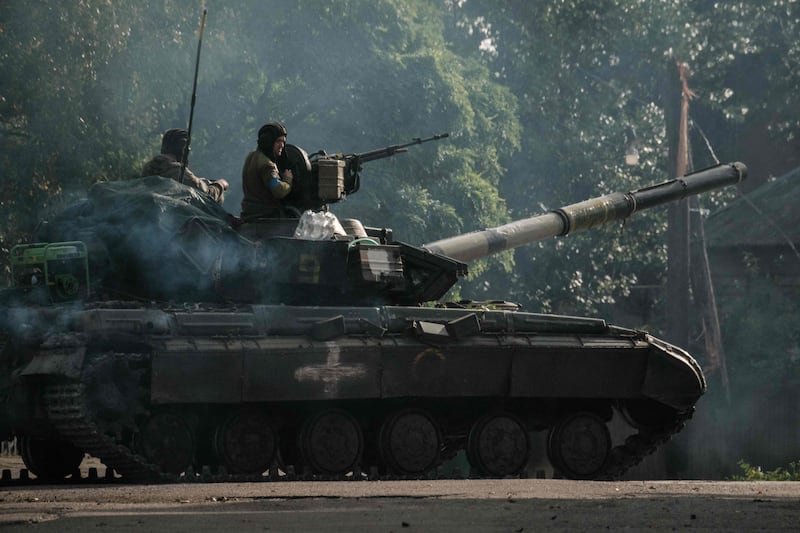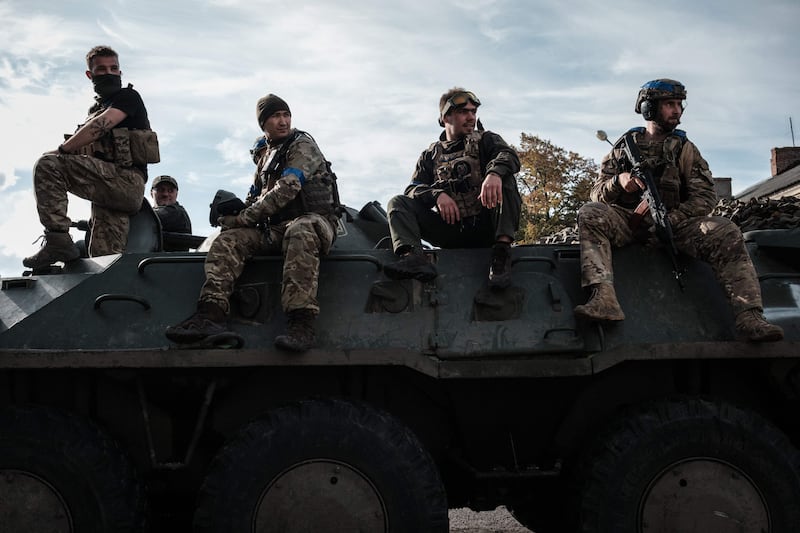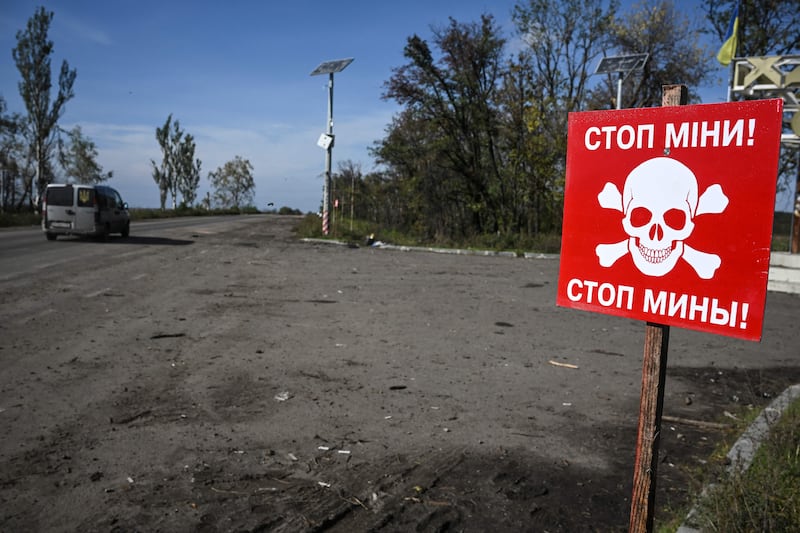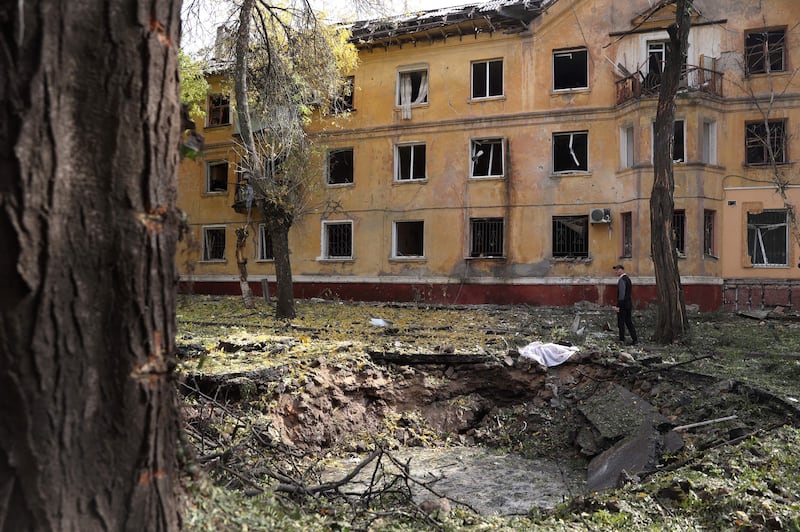Russian forces are trying to slow down tanks in Ukraine by building "dragon's teeth", a type of fortification not seen in combat since the Second World War.
The obstacles, concrete blocks in the shape of pyramids, were built in Britain during the war as fears of a Nazi invasion grew, as well as in Germany.
Russia has started to build the defences around the occupied southern Ukrainian city of Mariupol, the UK's Ministry of Defence said on Wednesday.
"Dragon’s teeth have likely been installed between Mariupol and Nikolske village, and from northern Mariupol to Staryi Krym village," it said.
The concrete “teeth” are embedded at least one metre into the ground to hamper attempts to dislodge them.
Ukrainian tanks, which were mainly designed during the Soviet era, could be damaged if they are driven over the blocks.
Ukraine’s T-64BM Bulat tanks weigh 38 tonnes, making them a little heavier than the largest variant of the American Shermans used in the Second World War. The US vehicles were unable to pass over dragon’s teeth.
In the 1990s, South Korea built dense rows of the concrete blocks near Goyang, a satellite city of the capital Seoul, in the belief they could slow down the North’s Soviet-era tanks.
The defences are not intended to be completely impassable, but are instead used to channel attackers towards ambushes and areas where artillery fire can be concentrated, experts say.
The teeth were a major problem for the US Third Armoured Division as its tanks entered western Germany by crossing the Siegfried Line, which comprised bunkers and dragon’s teeth.
The US 23rd Armoured Engineer Battalion succeeded in crawling forward and placing explosives on the obstacles, but not before being attacked with heavy machinegun fire and mortars.
The teeth proved effective for Germany when American forces could not find a way around.
Are dragon's teeth effective today?
Russia is unlikely to install a defensive line in Ukraine as dense as the Siegfried Line, which was built over a period of several years starting in 1936, covered 600 kilometres, included nearly 20,000 bunkers and used about eight million tonnes of concrete.
It is possible that more modern tanks will be able to deal with the obstacles by using their main guns, a last resort in the Second World War when the guns were less powerful and less accurate.
Ukraine also has the US-supplied M58 Mine Clearing Line Charge, a trailer that lays a line of C-4 plastic explosives more than 100 metres long.
It is designed to clear obstacles as well as mines, and in theory could remove dragon’s teeth.
Ukraine is more likely to seek a way around the defences or send infantry to seize the far side of the barrier until engineering units arrive.
